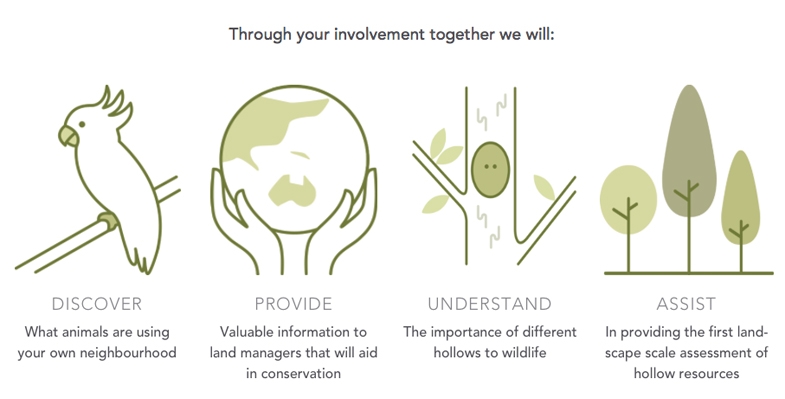Hollows as Homes
The Australian Museum has joined the Royal Botanic Garden Sydney and Sydney University in launching a new citizen science project called Hollows as Homes. Funding support is provided by the Australian government.
The project builds on the Cockatoo Wingtags project and involves the same researchers, led by Dr John Martin.
In urban and agricultural areas large, hollow-bearing trees are in decline, but many species of animal rely on tree hollows for shelter and breeding.
In NSW, hollow-dependent species include at least 46 mammals, 81 birds, 31 reptiles and
16 frogs. Of these, 40 species are listed as threatened with extinction. This is why the ‘loss of hollow-bearing trees’ has been listed as a Key Threatening Process to biodiversity throughout Australia.
One reason that their loss is significant is the length of time that it takes for a tree hollow to form (often more than 100 years). More hollow-forming trees are needed to replace the losses that have occurred already. The solution being trialled is to create artificial hollows and nest boxes.
The Hollows as Homes project aims to conduct the first landscape scale assessment of tree/nest box/cut-in hollow distribution, type and wildlife use. Data generated will inform council plans for retaining important habitat trees, planting future habitat trees and supplementing missing habitat.
The project will harness the enthusiasm of local residents to report, measure and monitor tree hollows in their backyards, streets and parks.
Participating is easy – check the trees in your backyard, street, park, paddock or the bush, and report the hollow(s) online.
FeralScan
Feral animals cause over $720 million damage each year in Australia and threaten our native wildlife. FeralScan allows you to help reduce feral animal damage by mapping feral animal sightings, damage and control activities in your local area.
Ferals covered by the program include Indian Mynas, foxes, rabbits, feral cats and many more invasive species.












